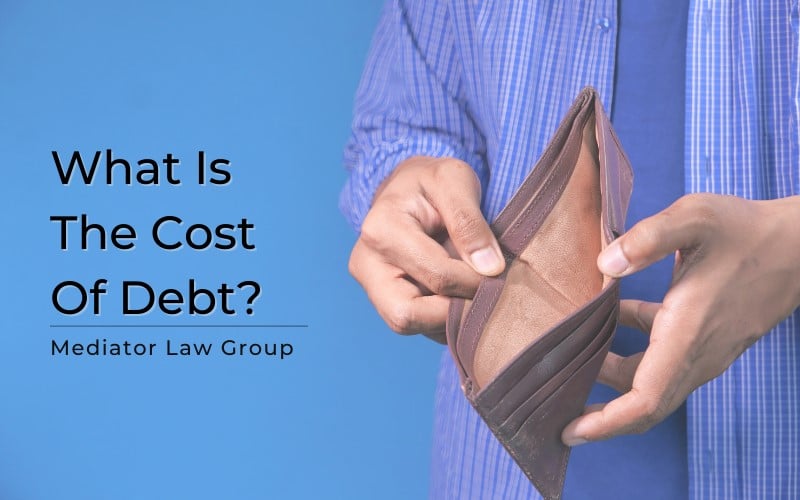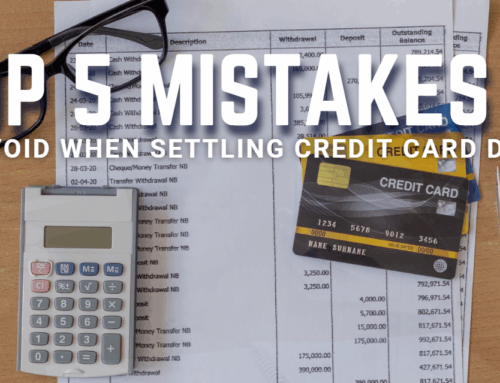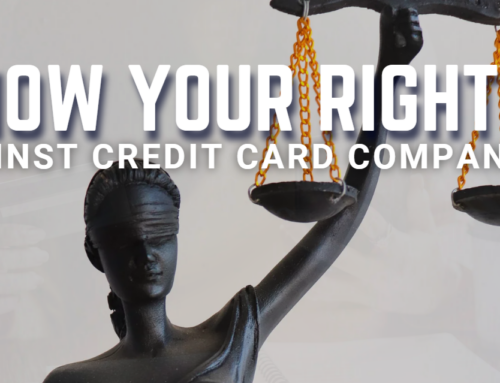Debt is a debt, which is when one person borrows money from another. Many businesses and individuals utilize debt to finance major items that they could not otherwise afford.
A debt arrangement is a legally enforceable agreement that allows the borrowing party to borrow money under the condition that it be repaid at a later date, usually with interest. While it may appear to be an easy and sensible solution, there’s also something called “the cost of debt.” What exactly is this?
The Cost Of Debt
The effective interest rate that a firm pays on its debt, such as bonds and loans, is known as the cost of debt. The before-tax cost of debt is the company’s cost of debt before taxes are taken into account, whereas the after-tax cost of debt is referred to. The difference in the cost of debt before and after taxes is that interest charges are tax-deductible.
Debt costs are one aspect of a company’s capital structure, which also includes equity expenses. The capital structure of a business concerns how it finances its entire operations and growth using a variety of sources of cash, such as bonds or loans.
The cost of debt analysis is important since it reveals a business’s overall rate of interest on these sorts of debt financing. Investors will also be able to see the company’s risk level relative to that of other businesses, as higher-risk firms generally have greater debt costs.
How Does It Work?
The cost of debt is one component of a company’s capital structure, along with the cost of equity. To properly finance their normal operations and any expansion efforts, businesses must first know their cost of debt and cost of equity. Keep in mind that the cost of debt is often lower than the cost of equity for any firm.
When considering new debt, company decision-makers evaluate both the cost of debt and the potential income growth that it will enable. For example, a firm with a low cost of debt may feel that paying off a $1.5 million mortgage for a retail store in another state is worth it because the branch is predicted to generate twice that amount in its first year of operation. Small companies that can’t afford high-interest debts might put off growth until they pay down their bills and improve their cash flow.
Costs of debt are important to a variety of people, including company owners and staff concerned with company spending. Lenders and investors consider the cost of debt when deciding whether or not to finance a business. Businesses with a greater burden of debt are perceived to be riskier investments than firms with a lesser cost of borrowing.
Cost Of Debt Vs. Cost Of Equity
Debt and equity capital are both used by businesses to continue operating day-to-day. When compared to debt, equity capital is more costly and has a less favorable tax treatment. However, too much debt financing can create credit risk and the possibility of default or bankruptcy. As a result, businesses try to optimize their weighted average cost of capital (WACC) across debt and equity.
Why Should Debt Have a Cost?
Borrowers must pay back the original amount of debt, as well as interest, in order to obtain a loan. The cost of debt that creditors demand is the interest rate or return—it accounts for the time value of money, inflation, and the risk that the loan will not be repaid. It also considers the opportunity costs linked to the money used for the loan being idle. Now, what makes the cost of debt increase?
Certain elements can influence the cost of debt, depending on the lender’s risk tolerance. A longer payback period results from the greater time value of money and opportunity costs that accrue over time. Backing a loan with collateral lowers the cost of debt, whereas unsecured debts will have higher costs.
The greater the riskiness of the borrower, the more expensive debt is since there is a higher chance that the debt will go into default and be unpaid. Something that’s worth considering in the cost of debt is knowing your taxes and how much this will affect your cost of debt.
Taxes & Cost of Debt
Because the interest paid on obligations is frequently treated favorably by tax rules, debt repayment costs can be lowered. The after-tax cost of debt is the interest paid on debt less any income tax savings due to deductible interest expenses. Subtract a firm’s effective tax rate from one, multiply the difference by the cost of debt, and you’ve got your after-tax cost of debt. The company’s overall effective tax rate is the sum of its state and federal tax rates.
If a company’s only debt is a bond with a 5% rate of interest, for example, its pretax cost of debt would be 5%. If your effective tax rate is 30 percent, the difference between 100% and 30% is 70%, with 70% of the 5% being 3.5%. The after-tax cost of debt is about 3.5%.
The rationale for this calculation is that the firm saves money on taxes by deducting its interest as business expenditure. Consider a scenario in which, for example, a business has issued $100,000 in bonds with a 5% interest rate. The $5,000 interest payment is deducted from the company’s income each year.
This amount is recognized as a cost, lowering the firm’s earnings by $5,000. The business saves $1,500 in taxes by claiming its interest since it pays a 30% tax rate. As a result, the firm pays just $3,500 on its debt. This equates to a 3.5 percent interest rate on the company’s debt. Curious to know how to calculate the cost of debt?
How To: Calculate The Cost Of Debt
Businesses must take the yearly interest rate for all of their obligations into account when calculating their debt cost. The cost of debt is important to calculate a company’s weighted average interest rate rather than just the average interest rate since even if a business has a lower interest rate, a larger loan will cost it more over its lifetime than a smaller loan. Here is how you calculate effective interest to use in assessing the cost of debt:
Effective interest rate = (total interest expense) / (total debt balance)
The effective interest rate is multiplied by one minus the company’s tax rate as the cost of debt usually refers to an interest rate after-tax. The total amount the firm is taxed, including federal and state taxes, is referred to as the company’s tax rate. The cost of debt is the last calculated rate.
Cost of debt = (total interest rate) x (1 – total tax rate)
Is It Possible to Reduce The Cost Of Debt?
Many companies try to decrease their cost of debt since it is more affordable. Many businesses attempt to reduce their cost of debt because it is less expensive. The following are some suggestions for lowering your company’s cost of debt:
- Improve your credit score
Improving your credit score may help you save money on your mortgage. Your credit score is one of the most important elements when it comes to determining your borrowing rates. Any future loans that you take out will have a lower interest rate if your credit score improves.
Reducing your reliance on credit and paying off old obligations can both raise your credit score. Check your credit report on a regular basis to ensure that it is correct, as any mistakes could harm your score.
- Negotiate lower interest rates
You don’t have to accept the lender’s proposed interest rate for a fresh debt. While some lenders will be inflexible, others will be more flexible. Your negotiation efforts will be most successful if you can show the lender that you are a low-risk customer. This is accomplished by putting your company or personal assets as collateral or obtaining a guarantor to sign for the loan.
Even if the lender refuses to budge on the interest rate, you may be able to negotiate a lower rate in the future. Your lender will be more inclined to reduce the interest rate if you make larger payments than the minimum and pay your installments on time.
- Refinance your business loans
To refinance your company loans, you must take out new loans to pay off your existing debts. If you can obtain improved loan terms with better interest rates, refinancing may be a smart option. However, legal paperwork, credit checks, and other costs involved with refinancing should all be considered. You can refinance your business loan with your existing lender or one of its rivals.
- Repay debts faster
Another approach to reducing your debt burden is to pay down debts faster. Some lenders allow you to make extra payments and close your loans sooner, with no penalty. Others charge exit fees if you pay off a loan before the terms have been completed. Renegotiating repayment conditions may help you avoid exit fees.
Mediator Law Group and Your Debt
Debt may be used to pay for projects, realize a homeownership goal, or fund higher education. However, too much or uncontrolled debt might hinder borrowers in their ability to return. Contact Mediator Law Group today for more information on how we can help you with your debt.






